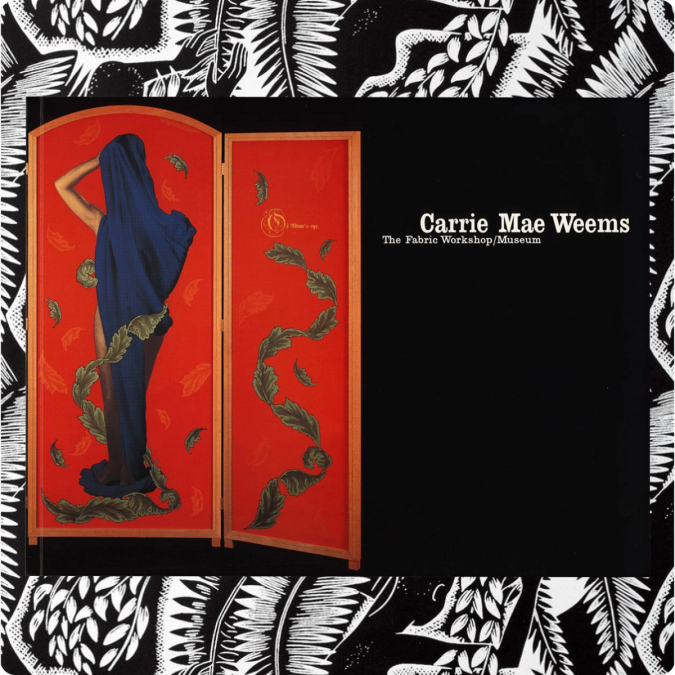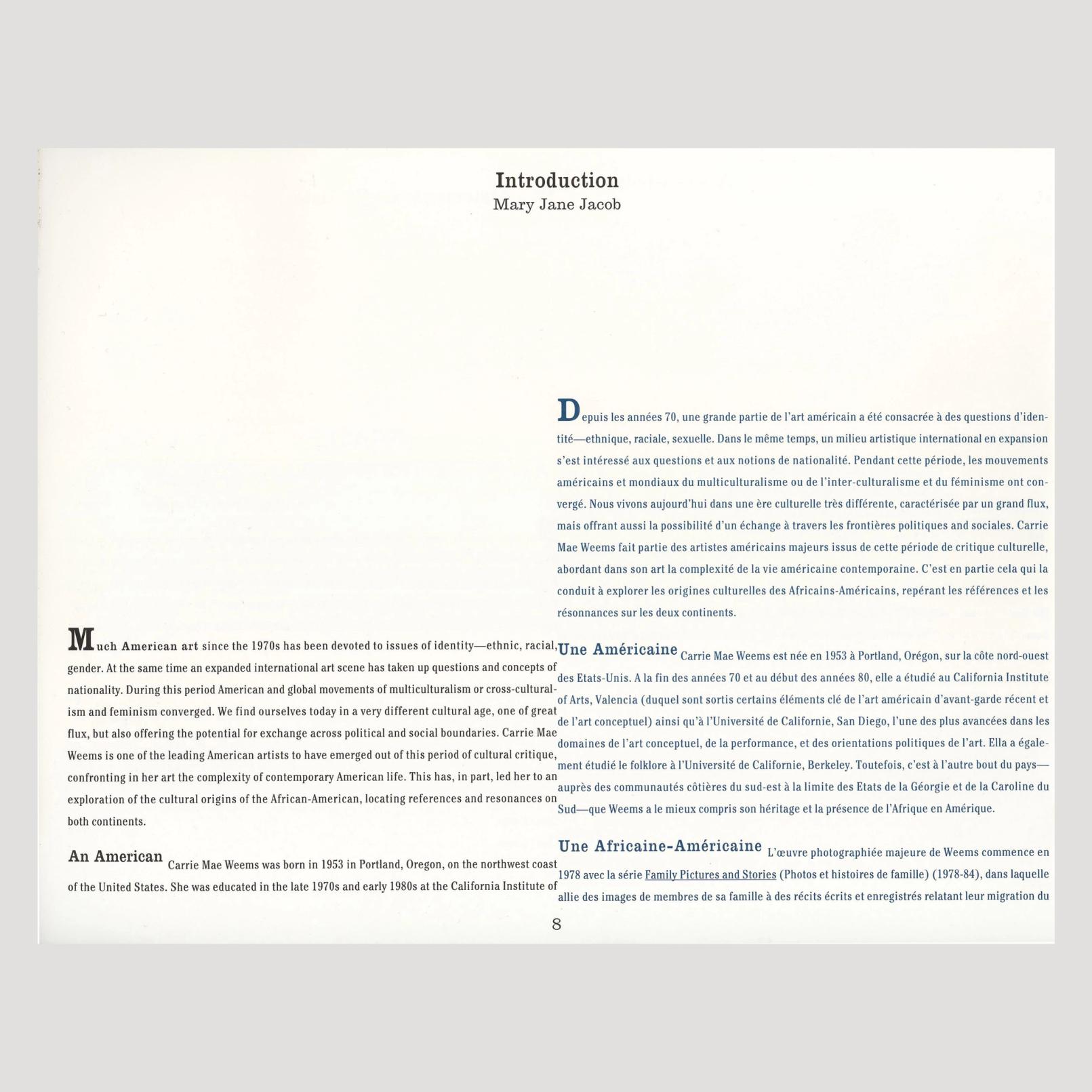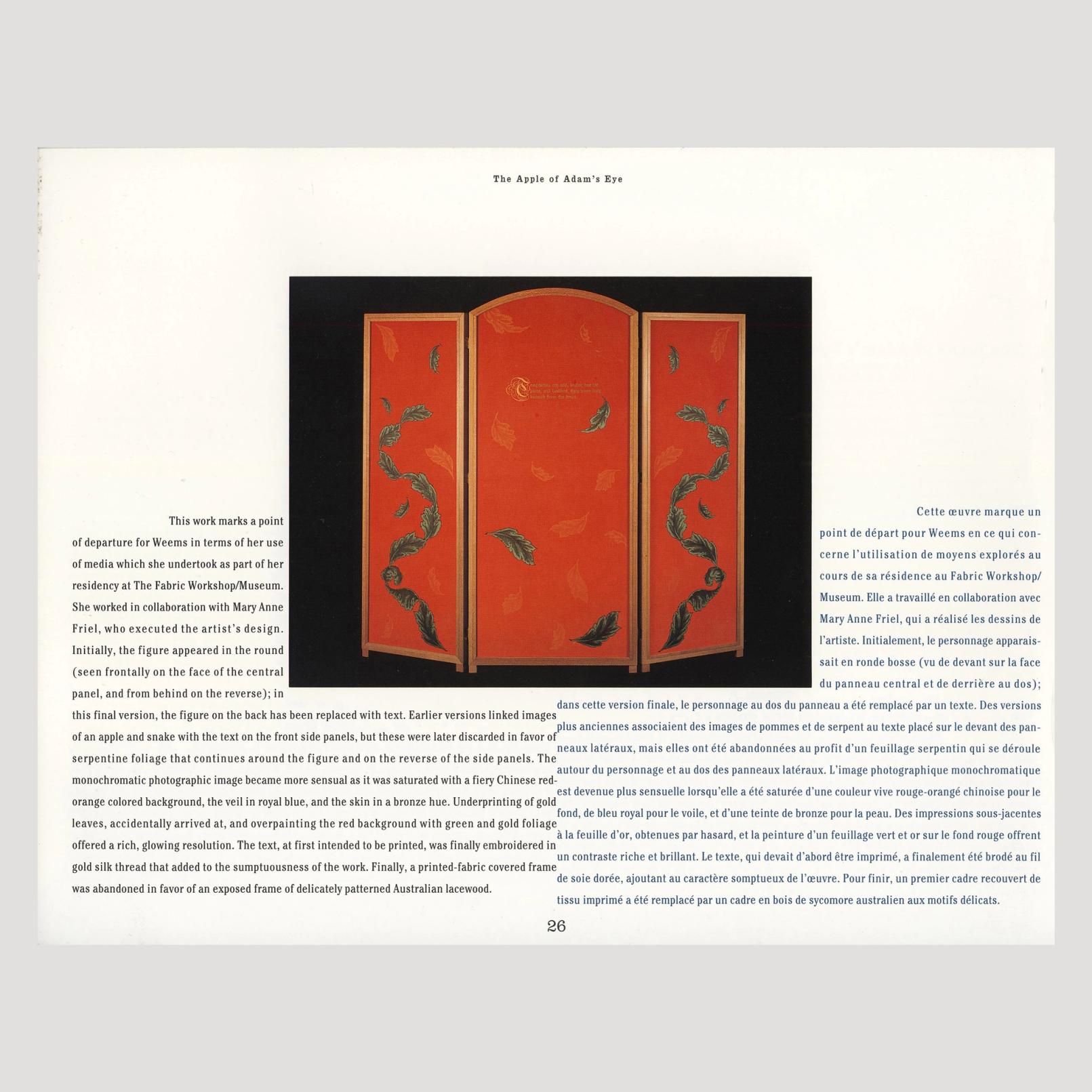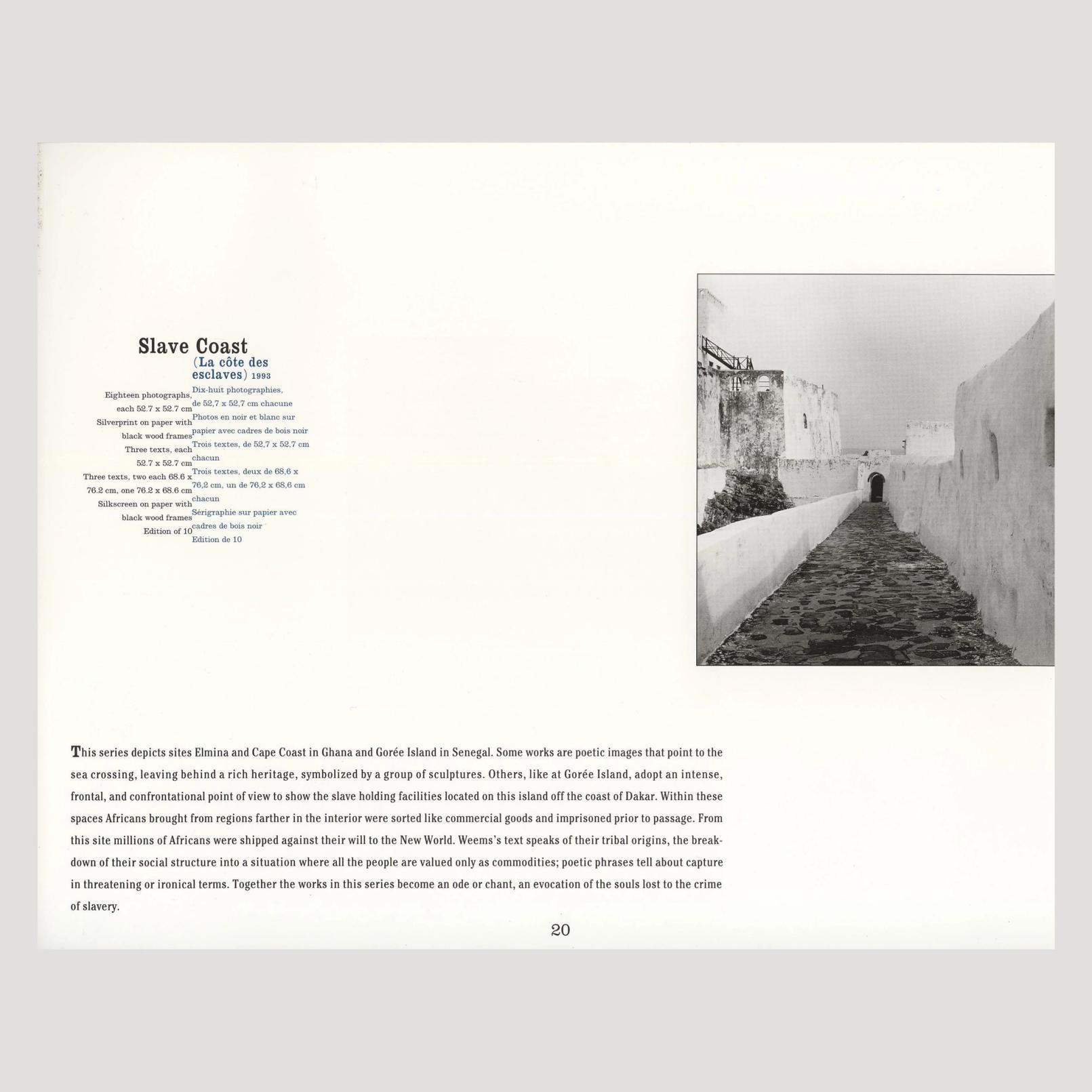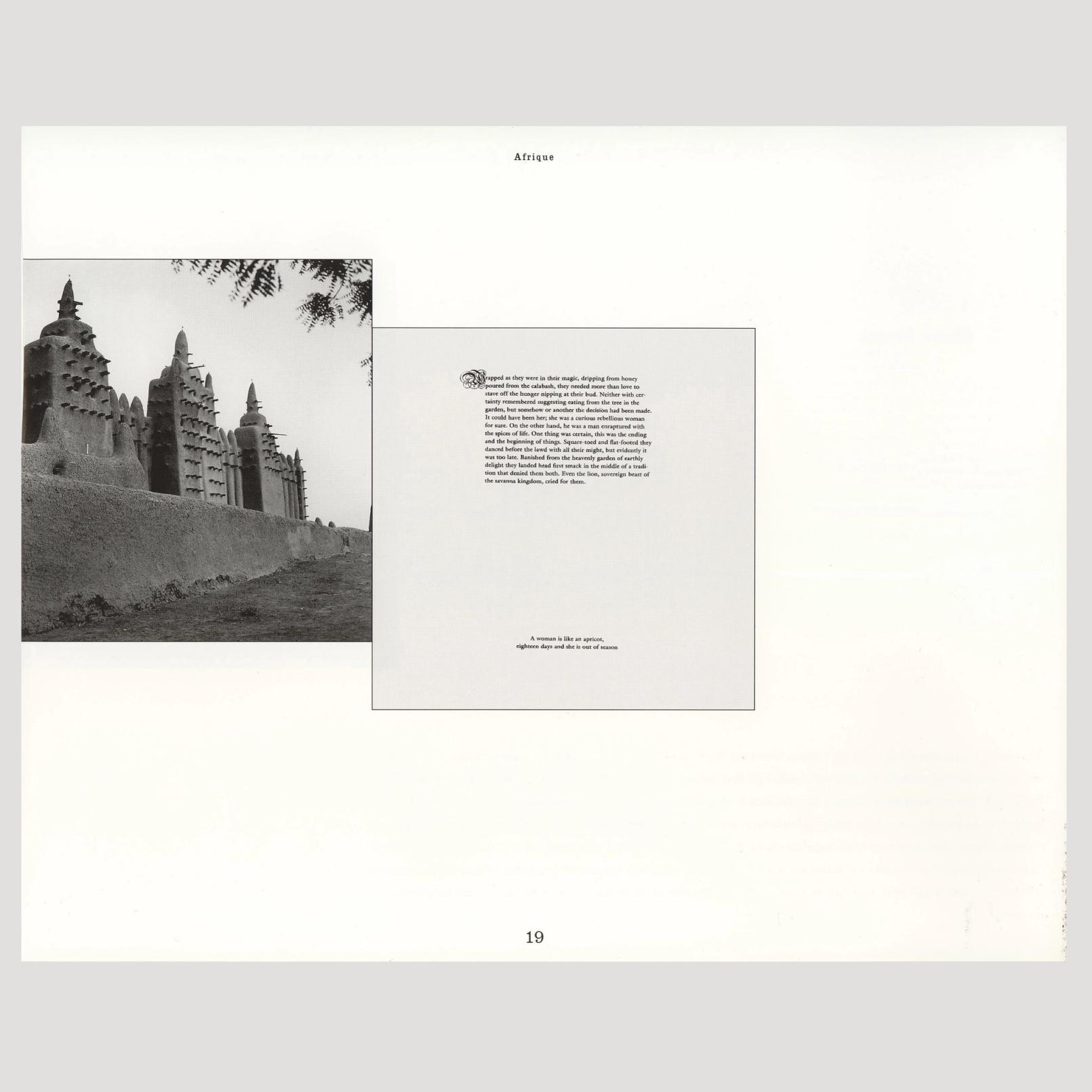FWM Exclusive
Carrie Mae Weems
1
Description
During her residency at FWM (1991–1993), Carrie Mae Weems experimented with several projects which culminated in the production of a folding screen, The Apple of Adam’s Eye, now part of FWM’s Collection. This work became the centerpiece for a room-sized installation of various objects, including several series of photographs (the medium for which the artist is best known).
With an original essay by bell hooks, this publication includes both English and French language versions of the accompanying text.
Published by The Fabric Workshop and Museum, 1996
Softcover, 40 pages / color, black and white
Includes a Foreword by Marion Boulton Stroud, Artist Acknowledgments by Carrie Mae Weems, an Introduction by Mary Jane Jacob, and an essay, Diasporic Landscapes of Longing, by bell hooks.
ISBN: 0-9619760-4-7
